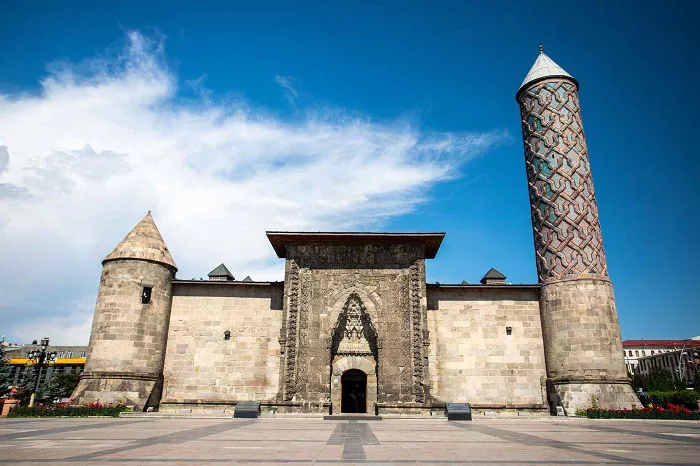In celebration of the 102nd anniversary of the Republic of Türkiye, the General Directorate of Cultural Heritage and Museums has launched a new exhibition titled “3,000 Years Ago in the Iron Age: Erzurum.” The exhibition is part of the “100+2 Temporary Museum Exhibitions Project,” initiated by Minister of Culture and Tourism Mehmet Nuri Ersoy.
Hosted at the Erzurum Museum, the exhibition features 144 previously unseen artifacts unearthed from the region, shedding light on the daily lives and survival strategies of Erzurum’s ancient inhabitants. The collection includes tools, decorative objects, and weapons that date back three millennia, offering visitors a rare glimpse into the material culture of the Iron Age.
Speaking at the opening event, Deputy Director-General of Cultural Heritage and Museums Bora Dündar highlighted the significance of Anatolia as a cradle of ancient civilizations. He emphasized the resourcefulness of early communities in the region, noting their ability to transform natural materials into practical and aesthetic objects.
“From the storage of the Erzurum Museum, we have selected and restored 144 pieces for this exhibition,” Dündar stated. “These artifacts reveal how life 3,000 years ago was both challenging and creative. They demonstrate how early peoples enhanced their lives through craftsmanship, survival tools, and artistic expression.”
Dündar also reflected on the broader historical context of the Iron Age, a time when scattered tribes evolved into organized states and empires. He remarked on humanity’s enduring resilience and creativity during a period marked by conflict and transformation.
“Amid war and hardship, people crafted tools from bone, shaped the land, and even created beauty in the objects they used. These artifacts allow us to trace not only technological progress but also the cultural values of those who lived thousands of years ago,” he said. “This exhibition helps us connect deeply with our shared humanity through art and heritage.”
Ahmet Yer, Director of the Erzurum Provincial Directorate of Culture and Tourism, also addressed attendees, emphasizing the vital role of museums in preserving national identity and cultural memory.
“Museums are not merely places where history is displayed—they are institutions of learning, research, and public engagement,” Yer noted. “We are striving to make museums more dynamic and accessible, particularly for young people. By fostering connections between students and their cultural heritage, we aim to cultivate historical awareness and national pride.”
Yer added that initiatives in collaboration with schools are ongoing to encourage educational visits and enhance the public’s appreciation for heritage preservation.
Following the speeches, visitors explored the newly unveiled artifacts, displayed in specially curated sections of the museum. Museum experts were on hand to provide context and insight, deepening the public’s understanding of Erzurum’s archaeological and cultural legacy.

